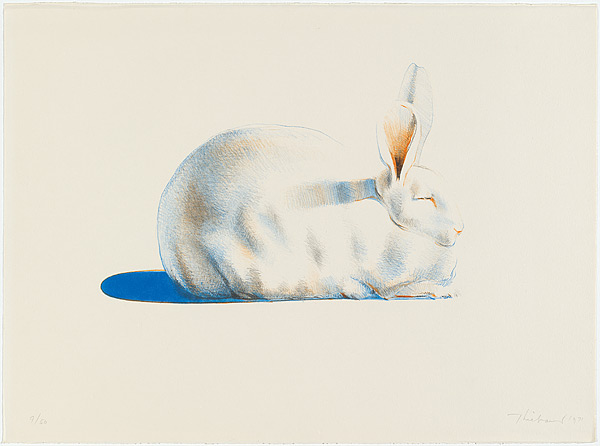 Wikipedia, the online encyclopedia
Wikipedia, the online encyclopedia, defines lowbrow art as follows:
Lowbrow, or lowbrow art, describes an underground visual art movement that arose in the Los Angeles, California, area in the late 1970s. Lowbrow is a widespread populist art movement with origins in the underground comix world, punk music, hot-rod street culture, and other California subcultures. It is also often known by the name pop surrealism.
The majority of lowbrow artworks are paintings; there are also toys (vinyl and plush), and sculptures.
The definition goes on to discuss the first artists to create what came to be known as 'lowbrow' art, magazines in the genre (the most famous being Juxtapoz, whose editor, Robert Williams, claims to have coined the name "lowbrow"), and 'alternative' galleries that carry these types of works.
Just so you know to whose work I am referring, some of the most well-known of these artists are: SHAG (Josh Agle), Mark Ryden, Marion Peck, Todd Schorr, Elizabeth McGrath, Tim Biskup, Gary Baseman, Gary Taxali, Anthony Ausgang, Camille Rose Garcia, Joe Sorren, Tara McPherson and Raymond Pettibon.
The Wikipedia definition goes on to historically compare the Lowbrow artists to the Dadaists.
This is where they lose me.
Now, I really enjoy looking at their works, even own a few of their books. I am entertained by their not so subtle interpretation of pop culture and their 'jabs' at historic art. I even enjoy seeing how 'creepy and offensive' some of them can get.
But since when are illustrations, comic books, tattoos and graffiti considered an art movement?
Art, yes. Movement? Nah.
Comparing Shag to Marcel Duchamp makes me cringe.

Okay, so the first time Marcel Duchamp penned R. Mutt on a urinal and called it a "Fountain", the art world was aghast at what he considered art. But he was the first (the
first) to take an everyday object and ascribe some ironic meaning to it.
Jeff Koons, a well respected contemporary artist, merely did the same years later and his work has recently been rapidly declining in value. You may recall the white porcelain puppy planters or blue balloon dogs on plates that appear in online auctions weekly.

Even Nara and Murakami (two asian artists whose work treads the fine line between 'fine art' and lowbrow' art and are referred to as Neo-Pop Japanese art) have also declined in value.


Just take a look at the chart below. It is January 2007 data from
artprice on auction and sales values in the art world.

So, as I was saying before I got off on an art tangent there, Did Shag have the same impact on society that Marcel Duchamp did?
To compare some fun retro cocktail party scenes or cute tiki illustrations and altoid tins to Man Ray's Photographs or Duchamp's urinal is not only a stretch, it's a disservice to the fine art world.
Nowhere in the Wikipedia definition do the words goth, creepy, alien, retro or macabre appear, yet you can ascribe most of these adjectives to the work in this genre.
Yes, I'd pay a lot of money for an original Francis Bacon or Lucien Freud painting (similarly described as macabre, goth, creepy...even disturbing) but probably not for an original Mark Ryden. And that's not because Mr. Bacon is dead and Mr. Ryden is alive and kicking, but because, to me, Francis Bacon is an artist and Mark Ryden is an illustrator. Albeit an excellent illustrator. The difference between their work however is not merely because of the style or medium in which they work, but it's because of their originality, conceptuality and the emotion evoked by their works. Bacon's work is open to interpretation, multiple manifestations of theory and conjecture, whereas what you see is what you get with Ryden's work. One can look at Bacon's paintings and see something different every time, not so much with Ryden's.

Please understand me, I believe the aforementioned lowbrow artists are talented. I think their works are amusing at the very least and valid expressions of culture and society at the very most. I'd happily buy Shag's cocktail party invites to mail out or wear a Nara T-shirt. I hope these artists make money. I believe they work hard and have great talent. But is it art or a fad?
Over 15 years ago, I hired Gary Baseman to do some illustrations for a piece for Dayrunner (the organizational agenda company) and he did an excellent job. I picked him after looking through what was then the bible for art directors to find illustrators (the blackbook). But would I have considered going to a show of his works? Probably not.
I do believe that those people who plopped down 2500$ for a Shag lithograph 5 years ago, couldn't sell it on ebay for even half that today.
To whom exactly does low-brow art appeal? It's not like you can equate lowbrow with low cost anymore. Many of these artists sell pieces of their work for thousands of dollars. But will the value of these pieces increase?
According to market indeces and art world trends, the answer is no. I am not privy to Juxtapoz Magazines' circulation numbers or Shag's personal income, but I bet it's not climbing steadily.
So, before you 'invest' in a piece of lowbrow art, I have two words for you:
Patrick Nagel.






















































